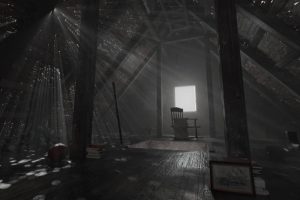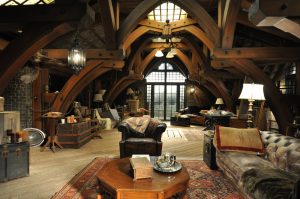
Steven Millhauser’s “The Room in The Attic” immediately led me down a train of thought of how literature itself is a representation of the fantastic, and acts as a fantastical object in day-to-day life.
The introduction of Wolf, and his opinion that “books weren’t made of themes, which you could write essays about, but of images that inserted themselves into your brain and replaced what you were seeing with your eyes” is a sentiment that comprises the whole of the story (3). David’s entire experience with Isabel is absent of visual representation, but rather he uses his other senses to compile imagery of Isabel. The imagery goes through different forms, “blue-eyed Isabels and smiling Isabels, Isabels in red shorts, Isabels in faded jeans…” pleasant imagery of the playful adolescent following disturbing imagery as well (11). The variety of forms Isabel takes up in David’s imagination is similar to how the imagery of a story or novel can manifest in different ways, at different times, in both the same individual’s mind, as well as between separate individuals.
The fantastic part of David’s experience “is [in] the dark room, the realm, the mystery of Isabel-land” where “the other world dissolved in a solution of black” (18). The darkness of the attic, while shutting out the outside world, is itself a world for David. Similarly when indulging in literature oftentimes the curtains of the outside world can be drawn shut, while the curtains of an imaginary, fantastical realm can be drawn open. David highlights that “the real division was between the visible world and that other world, where Isabel waited for [him] like a dark dream,” giving way to the notion that Isabel herself is not the other world herself, but a manifestation of a part of that world, a vessel for which the world comes to exist (15). Parallel are characters in literature, though they are the vessel in which the world is introduced, literature allows the entrenchment into the ‘other world’ outside of its own narrative and plot.
Most interesting to me, and important to this train of literary thought, is that David runs away from Isabel when she is ready to be revealed to the light. This, for me, indicates the importance of agency when interacting with art of any kind. Art, and therefore literature, is meant to evoke a response, a feeling, and intellectual introspection. David’s running away made me think of how I approach perusing an art museum, or observe a piece of art. I look at the physical aspects of the painting, take note of my emotional reaction, and try to piece together what it all may mean. If I am particularly curious about the artist or piece, I may look up the intended meaning (if the artist has revealed such). However, there is always a shift in my perception of the painting once I read an analysis or historical interpretation of the art. David fleeing from Isabel’s true form is synonymous with me leaving the piece of art unexamined, letting it remain in my brain and memory influenced only by imagination, and the medium the artist used. David’s imagination of Isabel is a sacred piece of art, and an experience he wishes to keep untainted. However, I also divulge that literature and art can be equally fantastic with varying perspectives, and may just reveal a little more magic.

Picture Sources:
https://www.istockphoto.com/photos/creepy-attic
https://dna645design.com/portfolio/mansion-attic-witches-of-east-end/
I really agree with the comparison you made between David’s view of Isabel and the way we view works of art and literature. You hit on something I was trying to get at in my post, but I don’t think I articulated it quite as well.
I took issue a little bit with David for treating Isabel like a piece of literature rather than a person. How do you see that?